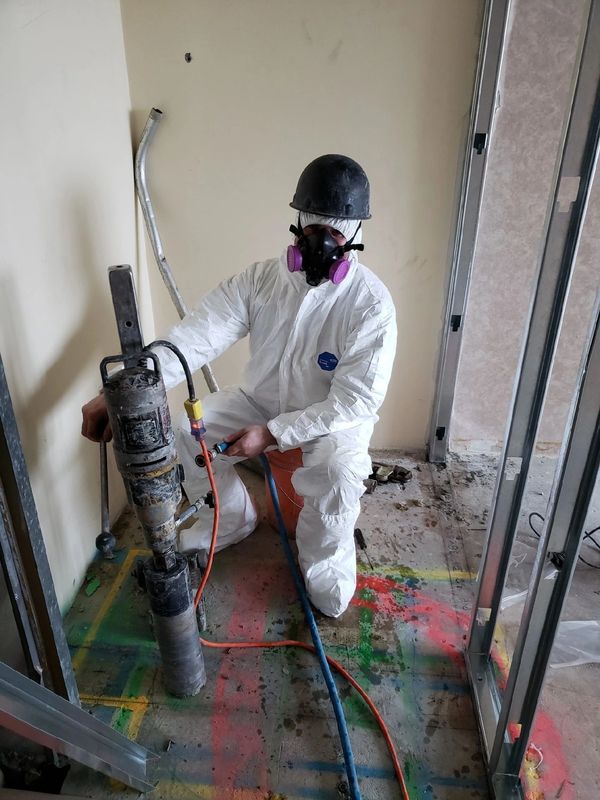Accuracy and Precision in Concrete Scanning Solutions
Accuracy and Precision in Concrete Scanning Solutions
Blog Article
Past the Surface Area: Leveraging Advanced Concrete Scanning Techniques for Unmatched Accuracy and Understanding
In the realm of construction and facilities upkeep, the pursuit for precision and thoroughness is incessant. Advanced concrete scanning methods have become essential tools in this quest, using a glimpse underneath the surface to reveal a world of important understandings. By using advanced technologies, experts can reveal abnormalities, evaluate the condition of concrete frameworks, and make educated choices that shape the course of jobs. The effects of these techniques extend far beyond plain surface-level evaluations, guaranteeing a deepness of accuracy and understanding that is unrivaled.
Significance of Advanced Concrete Scanning
The value of utilizing advanced concrete scanning methods depends on the unrivaled precision they offer for finding sub-surface anomalies and guaranteeing architectural integrity. By utilizing innovative modern technologies such as ground-penetrating radar (GPR), electromagnetic induction, and progressed sonar imaging, building and construction specialists can dive beneath the surface of concrete structures with a degree of precision that far goes beyond traditional assessment methods. Concrete Scanning. These techniques enable the recognition of hidden hazards like rebar corrosion, voids, avenues, or post-tension cables that can endanger the stability and security of a framework gradually
Moreover, progressed concrete scanning supplies very useful insights into the total problem of a concrete aspect without the demand for invasive procedures, reducing the threat of creating damages during the evaluation process. The ability to pinpoint the specific area and depth of possible problems allows for targeted repairs and upkeep, inevitably extending the life-span of the structure and enhancing its performance. In significance, the value of sophisticated concrete scanning can not be overstated in the realm of construction and facilities maintenance, where precision and integrity are vital.
Kinds Of Cutting-Edge Technologies

Abnormalities and Defect Detection

Along with GPR, concrete scanning techniques like thermography and impact-echo screening are likewise effective in finding issues and anomalies. Thermography makes use of infrared innovation to determine variants in surface temperature, indicating prospective locations of issue such as delamination or dampness access. On the other hand, impact-echo screening includes evaluating acoustic actions to detect voids, splits, and various other flaws within the concrete. By leveraging these innovative techniques, specialists can proactively attend to architectural concerns, ensuring the long life and safety of concrete frameworks.
Assessing Concrete Condition
How can engineers accurately examine the problem of concrete frameworks to guarantee their long life and security? Various sophisticated concrete scanning techniques are utilized for this function. Ground-penetrating radar (GPR) is generally utilized to analyze the interior structure of concrete, identifying spaces, cracks, and other abnormalities that might jeopardize its stamina.
In addition, aesthetic inspection continues to be a fundamental component of concrete problem evaluation. Engineers visually analyze the surface area for indicators of damage, such as spalling, splitting, or discoloration. Integrating non-destructive testing techniques with visual evaluations permits a detailed assessment of concrete condition, allowing engineers to recognize possible concerns early on and carry out prompt maintenance or repairs. By leveraging these innovative strategies, engineers can make certain the long-lasting longevity and safety of concrete structures.
Enhancing Decision-Making Procedures
In the world of framework monitoring, maximizing decision-making processes is important for making certain the effective upkeep and durability of concrete structures. Enhanced decision-making processes in concrete management entail using innovative scanning techniques to gather thorough information on the problem of structures. By leveraging modern technologies such as ground-penetrating radar and 3D imaging, stakeholders can make informed choices relating to repair work, reinforcement, or substitute methods.
These advanced scanning strategies provide invaluable insights right into the internal make-up of concrete, determining possible problems such as gaps, fractures, or corrosion that might not show up on the surface. This degree of detailed information permits aggressive upkeep planning, minimizing the threat of structural failings and enhancing the overall lifespan of concrete structures.
In addition, by incorporating electronic documents and analysis devices right into the decision-making process, stakeholders other can track the advancement of concrete problems in time, allowing anticipating upkeep approaches and enhancing source allocation. Inevitably, the integration of innovative concrete scanning techniques improves decision-making procedures by giving unequaled accuracy, understanding, and effectiveness in framework management.
Conclusion
In conclusion, progressed concrete scanning strategies provide exceptional precision and insight in spotting anomalies, issues, and evaluating the problem of concrete frameworks. By leveraging sophisticated technologies, decision-making processes can be enhanced, bring about even more efficient and enlightened services for keeping and repairing concrete infrastructure. These methods play a crucial duty in making sure the safety and durability of concrete frameworks, making them an important tool in the area of building and design.
Additionally, advanced concrete scanning offers important understandings into Discover More the overall condition of a concrete component without the requirement for invasive procedures, decreasing the danger of creating damage throughout the assessment procedure - Concrete Scanning. An additional ingenious innovation is 3D X-ray scanning, which gives thorough images of the interior structure of concrete, using useful info without the need for devastating testing. Additionally, Concrete Cover Meters are used to gauge the thickness of concrete cover over reinforcement bars precisely. Improved decision-making processes in concrete monitoring include making use of advanced scanning techniques to collect thorough information on the problem of structures.In conclusion, progressed concrete scanning strategies use unparalleled accuracy and understanding in discovering anomalies, issues, and analyzing the condition of concrete frameworks
Report this page